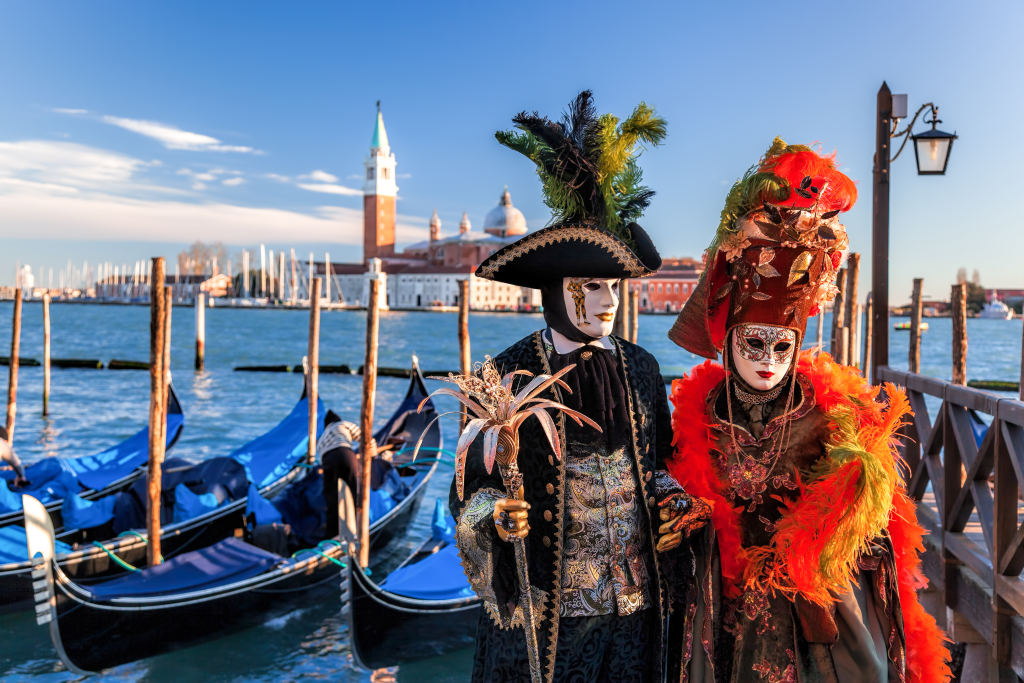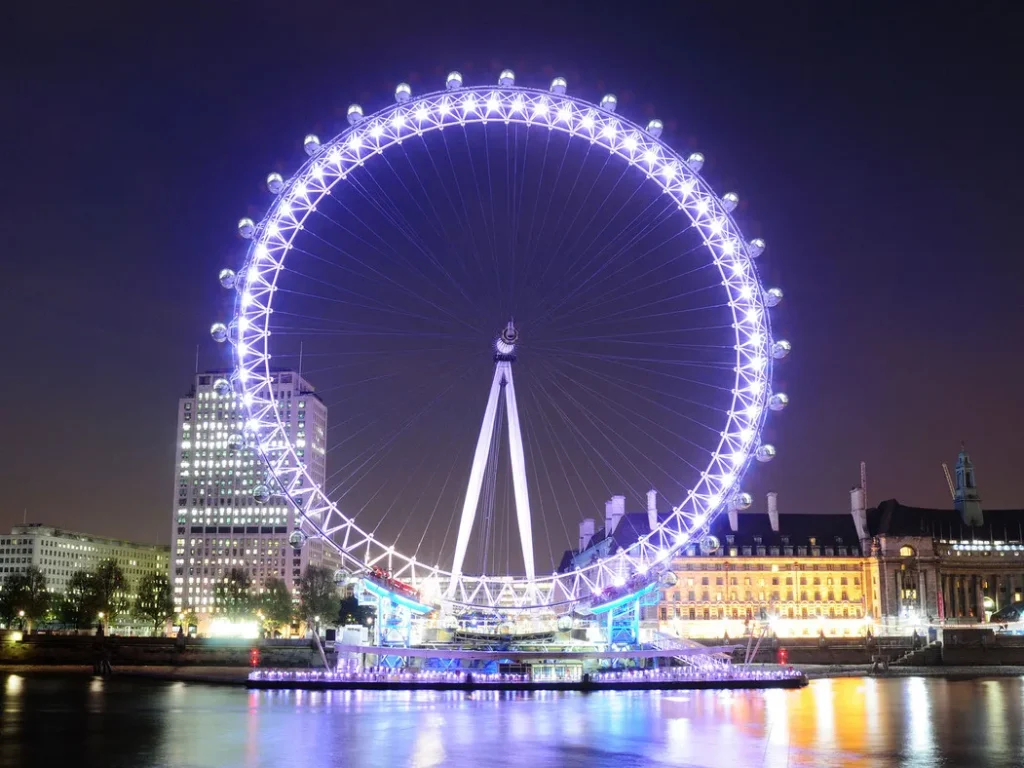Best Time to Visit Europe from the US – Month-by-Month Guide
Europe’s diverse geography, cultures, and climates make it a year-round destination for travelers from the United States. Whether you’re chasing snowy Alps in winter, sun-drenched beaches in summer, or the festive charm of holiday markets, Europe offers something special every month. But the best time to visit depends on your interests, budget, and tolerance for crowds. This month-by-month guide will help you plan the perfect European getaway.

January: Winter Wonderland & Low Prices
January is a quiet month for European tourism, making it one of the cheapest times to fly from the US. Expect chilly temperatures and shorter days across most of the continent. However, it’s ideal for:
Skiing in the Alps (Austria, Switzerland, France)
Northern Lights viewing in Norway, Sweden, and Finland
Exploring major cities like Paris or Rome with fewer crowds
Tips: Pack warm layers and take advantage of post-holiday sales. Airfares and hotel rates are generally at their lowest.

February: Romance & Snow Adventures
February continues the winter magic but adds a romantic touch thanks to Valentine’s Day. If you’re looking for a cozy escape or snowy activities, it’s a great month.
Visit Venice during its world-famous Carnival (usually in February)
Take a romantic stroll along the Seine in Paris
Explore Prague or Budapest, where the snow adds fairytale charm
Tips: Book early if planning around Carnival or Valentine’s Day. These popular dates can cause brief spikes in hotel prices.

March: Early Spring & Cultural Travel
March marks the slow transition from winter to spring. Southern Europe starts warming up, while northern areas remain cool.
Experience St. Patrick’s Day in Dublin, Ireland
Visit Andalusia (Spain) for mild weather and blooming landscapes
Ideal for museum hopping in London, Berlin, or Amsterdam
Tips: Shoulder season begins—meaning moderate prices and thinner crowds. A great month for cultural trips without extreme cold or heat.

April: Blossoms, Festivals & Mild Weather
April offers the best of both worlds—spring in full bloom and fewer tourists than summer.
Enjoy the Tulip Festival in the Netherlands
Wander through Parisian parks like Jardin des Tuileries and Luxembourg Gardens
Celebrate Easter in Rome or Seville with historic religious processions
Tips: Check local calendars for Easter dates and associated closures or festivities. Spring blooms make April perfect for photography lovers.

May: Perfect Weather & Pre-Summer Energy
May is considered one of the best months to visit Europe. The weather is warm, but not sweltering, and most attractions are open without high-season crowds.
Ideal for Greek island hopping
Hike in the Swiss Alps before peak summer
Visit Barcelona or Lisbon with pleasant temperatures and lively street life
Tips: May Day (May 1st) is a public holiday in many countries—some attractions may close. Book early for popular destinations.

June: Festivals, Sunshine & Longer Days
June kicks off the summer season with extended daylight, warm weather, and a calendar packed with festivals.
Celebrate Midsummer in Scandinavia (especially Sweden and Finland)
Attend Glastonbury Festival in the UK
Cruise the Danube River with sunny skies and lush landscapes
Tips: Prices begin rising. Book accommodations and train tickets in advance, especially for festival locations.

July: Peak Season & Coastal Escapes
July is high summer in Europe—expect sunny weather, large crowds, and vibrant local life. It’s a popular vacation month for both Americans and Europeans.
Lounge on beaches in Italy’s Amalfi Coast, Croatia, or Greece
Explore Iceland’s unique landscapes under nearly 24-hour daylight
Visit Edinburgh before the August festival crowds arrive
Tips: Book flights and accommodations months in advance. Consider less-crowded alternatives like the Baltics or Portugal’s Alentejo region.

August: Festivals & Mediterranean Bliss
August continues the peak season vibe with warm temperatures and buzzing cities. However, it’s also when many Europeans take vacations—some businesses may close, especially in France and Italy.
Experience La Tomatina in Spain or Edinburgh Fringe Festival in Scotland
Sail through the Greek Isles
Swim in crystal-clear waters of Croatia’s Dalmatian Coast
Tips: Avoid central city travel if you dislike heat and crowds. Coastal towns and mountains offer better relief.

September: Best of Both Worlds
September is a top month for visiting Europe—summer lingers, but the crowds thin out and prices drop.
Explore Tuscany during the grape harvest
Attend Oktoberfest in Munich (starts in late September)
Discover Slovenia or Austria with cooler hiking conditions
Tips: Book Oktoberfest lodging early—it’s wildly popular. September is ideal for couples, foodies, and culture lovers.

October: Fall Colors & Fewer Tourists
October offers beautiful autumn foliage, crisp air, and lower travel costs. It’s perfect for scenic getaways and wine tourism.
Enjoy fall festivals in Germany, France, and Hungary
Visit Transylvania, Romania, for Halloween thrills and castle tours
Stroll through Vienna or Prague in golden autumn hues
Tips: Days get shorter and cooler, especially in Northern Europe. Ideal for budget-conscious travelers and fans of fall colors.

November: Quiet Charm & City Breaks
November is Europe’s quietest month—ideal for those wanting cultural experiences without crowds. While it’s cooler and wetter, you’ll find great deals.
Explore London, Paris, or Rome with few tourists
Start the Christmas market circuit in late November (Germany, Austria)
Visit Portugal or southern Spain for mild weather and fewer crowds
Tips: Layer up and enjoy off-season perks like cheaper rates and shorter lines at museums.

December: Holiday Magic & Winter Celebrations
December in Europe is straight out of a snow globe. Cities sparkle with lights, festive markets, and traditional treats.
Visit Christmas markets in Germany, Austria, and the Czech Republic
Celebrate New Year’s Eve in cities like Berlin, Edinburgh, or Madrid
Hit the Alps for skiing or take a cozy train ride through snowy landscapes
Tips: Book early for December travel—especially around holidays. Pack warm clothes and prepare for shorter daylight hours.
Quick Summary: Best Time Based on Interests
Interest Best Months
Budget Travel January, February, November
Beach Vacation June, July, August
Sightseeing & Culture April, May, September
Festivals & Events June, August, December
Skiing & Snow Fun January, February, December
Fewer Crowds March, October, November

Final Thoughts
There’s no single “best” time to visit Europe from the US—it all depends on what kind of trip you’re dreaming of. Whether you’re after snowy adventures, cultural discoveries, sun-soaked beaches, or festive markets, Europe delivers every month of the year.
For the perfect balance of weather, prices, and experiences, May and September are standout months. But if you’re looking to save money or beat the crowds, consider the shoulder seasons or even the underrated winter months.
Plan ahead, pack appropriately, and be open to the unexpected—and Europe will reward you in every season.











